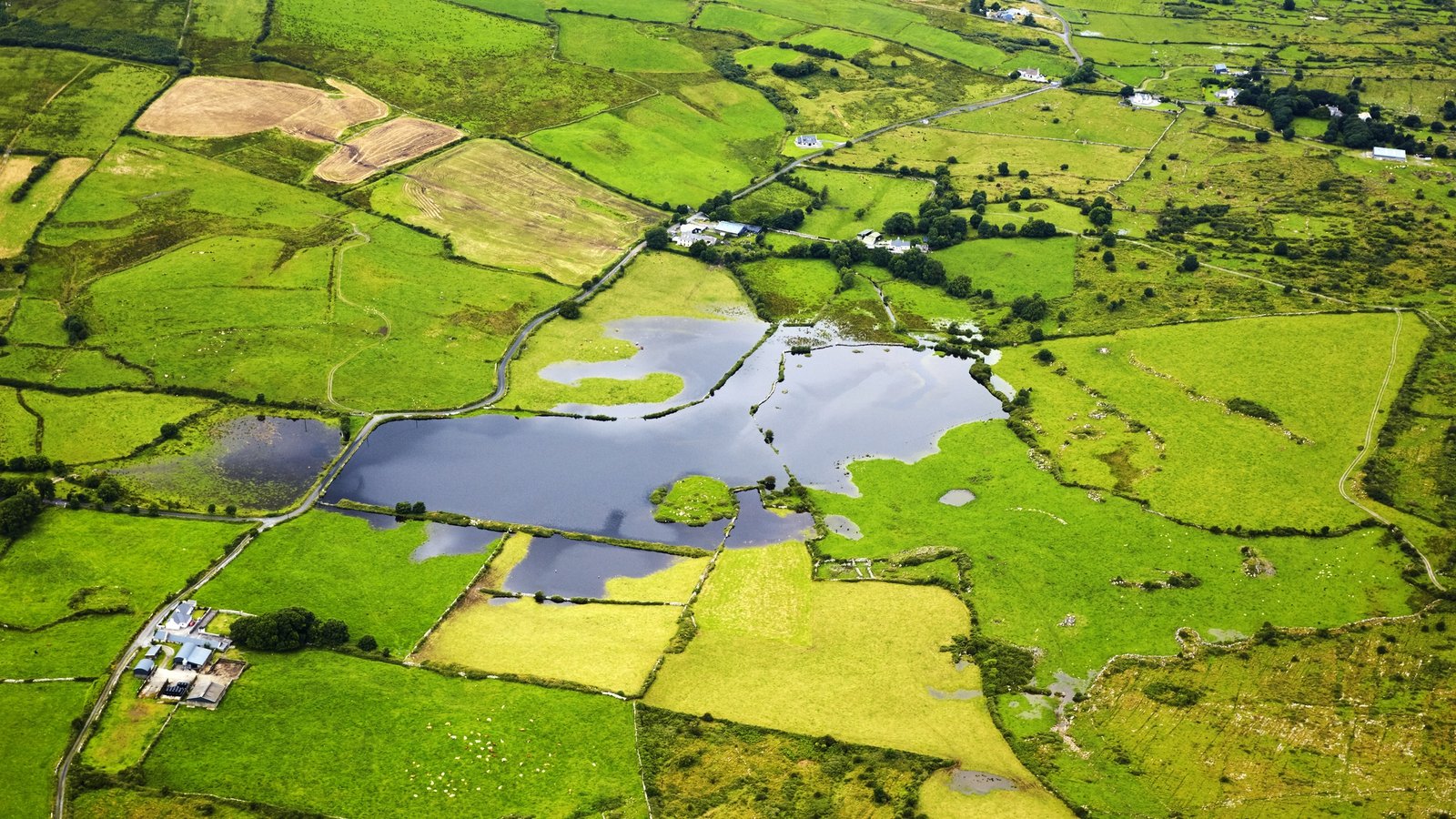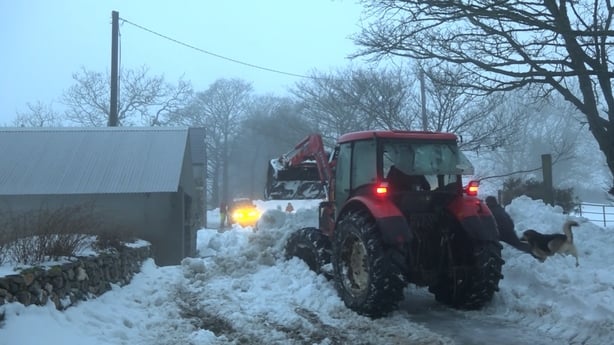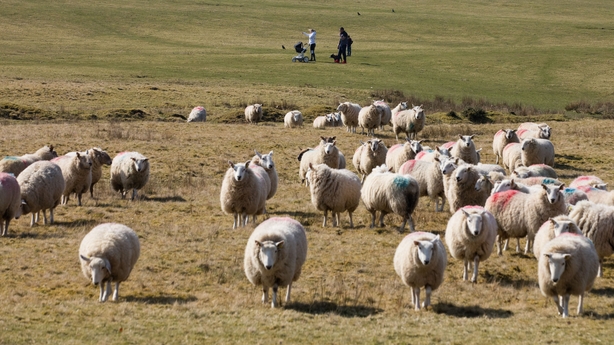Climate change linked to extreme heat, rain in Ireland

The first climate change assessment for Ireland has said there is high confidence that recent changes in heat extremes and heavy precipitation events can be linked, albeit indirectly, to human-induced climate change.
However, the report found there was no clear evidence for human-induced actions influencing the frequency or intensity of other types of extreme events in Ireland, such as windstorms.
The assessment – commissioned by the Environmental Protection Agency – includes contributions from climate scientists and experts from many of the country’s universities.
It outlines projections for how the issue is likely to impact Ireland in the coming years.
For the country as a whole, the assessment says that annual average temperatures are approximately 1C higher than they were in the early 20th century.
Sixteen of the top 20 warmest years since 1900 have occurred since 1990, with 2022 being the warmest year to date.
This is surpassed by 2023, the figures for which were not included in this study.
The assessment also says that median annual rainfall in Ireland was 7% higher between 1991 and 2020 compared to the 30-year period 1961-1990.
It highlights that since the late 20th century, sea level rise in Cork and Dublin has been higher than the global average, although the reasons for this are unclear.
Irish marine waters have experienced long-term acidification due to uptake of anthropogenic atmospheric carbon dioxide.
The main impacts of climate change on terrestrial species and habitats have been changes in species abundance and distribution, life cycle events, community composition, and habitat structure and ecosystem processes.
The heat and drought of summer 2018 following on from Storm Emma exposed the vulnerability of agricultural, forestry, transport and water systems to extreme events, the assessment found.
Floods and windstorms have impacted individuals and businesses, as well as critical infrastructure such as transport, electricity, and health care.
They have also impacted ecosystems, and human health and wellbeing, including through the contamination of water sources.
Delayed action would likely yield increasingly unrecognisable climate
Looking to the future the assessment says these components of climate change would globally stabilise within the lifetime of many of today’s younger citizens if the world can reach net zero carbon dioxide emissions by around 2050.
However, it warns that regardless of what happens on that front, some other components of the climate system, most notably sea level rise, will take thousands of years to stabilise even after greenhouse gas emissions reach net zero.
The assessment says that delayed action on emissions’ reductions would likely yield a climate that is increasingly unrecognisable as the century progresses.
If climate action is delayed by the end of the century it is projected that temperature increases in Ireland could be 2.77C.
Heat extremes will become more frequent and more severe and cold extremes will be less frequent and less severe with further warming.
What are currently considered unusually warm days would be typical days and what are currently considered cold days would be incredibly rare by the end of the century.

Truly extreme heat events that are rare in the present climate are projected to become more common under all scenarios while winters will tend to get wetter and summers tend to become drier.
Intense precipitation extremes become more frequent and extreme with further warming in most regions of Ireland across a range of precipitation indices.
Storm surges and extreme waves will continue to pose an ever-increasing threat as sea levels rise, including for coastal cities such as Cork, Dublin, Galway and Limerick, and to critical infrastructure.
Soft sediment shorelines are at particular risk.
Climate change impacts on biodiversity will be felt through changes in growing season length, phenology and species distribution, loss of and damage to ecosystems, and increases in invasive species.
In the oceans, changes in temperatures, acidification, salinity and nutrient levels mean that the distributions of some species are likely to shift, with implications not just for ecosystems but also for fisheries.
Climate change will impact all aspects of Irish agriculture.
While increases in productivity can be expected for some crops, decreases can be expected for others.
Pests and pathogens are likely to have increased impact on arable and livestock farming, while rises in precipitation amounts and intensity would increase nutrient washout from land with consequent impacts on water quality.
The lengthening of the growing season is often given as an example of a positive aspect of climate change for agriculture.

However, gains could be offset by extreme events such as longer and more intense droughts increasing crop losses, especially in spring and summer seasons.
For forestry some species are likely to fare better in a changing Irish climate, including Scots pine, beech and birch, while some are likely to experience decreased yields, such as oak and other deciduous trees.
With all major cities and many regional towns located close to the coast, Ireland is highly exposed to sea level rise and coastal erosion, especially in softer sediment coastal zones.
Significant increases in sea level beyond 2100 are inevitable, even under the most optimistic scenarios for reducing greenhouse gas emissions.
Over the next 2,000 years, the global mean sea level will rise by about 2-3m if warming is limited to 1.5C, 2-6m if limited to 2C, and 19-22m with 5C of warming.
Mid-range estimates of sea level rise are projected to quadruple the number of properties affected by flooding in some coastal locations.
Coasts are also home to critical infrastructure, such as ports, and a rich cultural and natural heritage, and provide important recreational resources that underpin tourism, all of which are highly exposed to climate change.
In Ireland, impacts on the hydrological cycle are unfolding in the context of increasing water demands, decreases in water quality and a lack of resilience in water infrastructure.
Increases in extremes of both floods and droughts are expected.
‘Critical’ that workplaces, hospitals, schools resilient to change
Ireland’s built environment is exposed to flood risks from rivers, the sea and rainfall extremes.
Large cities such as Dublin have a higher temperature than the surrounding rural areas due to the urban heat island effect and are thus more exposed to future heat extremes.
Increases in extremes present challenges for the integrity of built environments and heritage sites, the assessment says, and it is critical that workplaces, hospitals, schools and care homes are resilient to changes in extreme events.
Transport infrastructure is exposed to increases in sea level and flooding.
For energy infrastructure, the key risks are extreme wind speeds, increased precipitation and saturated soils, given their impacts on the electricity distribution network, with flooding also of concern.
Climate change impacts will directly and indirectly affect health and wellbeing, while vulnerability is likely to increase as Ireland’s population increases and ages over the coming decades.
Fewer cold extremes in winter may be positive in terms of reducing excess cold mortality rates, but climate change may also increase existing pressures on the public health service from respiratory diseases such as asthma through increased circulation of aeroallergens in a longer growing season.
Tourism is highly exposed and vulnerable to climate change.
While warmer winters are often highlighted as an opportunity for tourism, increased visitor numbers, without careful management, could put at risk sensitive and increasingly exposed and fragile heritage sites, environments and ecosystems.





